~Navigating the intricate, often poorly illuminated internal spaces of the human body during endoscopy demands exceptional visual clarity. Surgeons rely on high-contrast imaging to distinguish subtle tissue variations, identify bleeding points, or detect minute pathologies within dark lumens. An inadequate display can obscure these critical details, leading to diagnostic uncertainty, prolonged procedures, or even compromised surgical outcomes. Choosing the right monitor size and technology is therefore paramount for effective endoscopic interventions.
A 24-inch surgical monitor, such as our Reshin MS247SA, is highly suitable for high-contrast endoscopic imaging because it provides an optimal balance of ample screen real estate for detailed viewing and a concentrated field of gaze that enhances focus in challenging, low-light conditions. Its Full HD resolution ensures sharp differentiation of tissues, crucial for identifying subtle structures and pathologies typically encountered in endoscopic procedures.
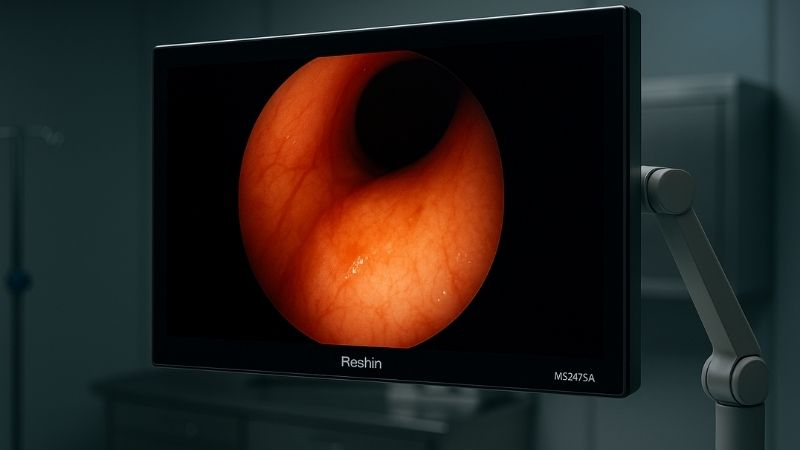
I’ve seen firsthand how specialized display technology can significantly impact surgical precision, particularly in endoscopy. Let’s delve into why the 24-inch form factor excels in these demanding high-contrast environments.
What makes 24 inches the optimal size for focused endoscopic viewing?
Endoscopic procedures often involve viewing magnified images from within dark body cavities. If the screen is too large, the bright, magnified image can cause peripheral distraction or require excessive eye movement.
A 24-inch monitor, like the Reshin MS247SA, offers an optimal viewing area that is large enough for detail but focused enough to prevent visual overwhelm common with larger screens in dark-lumen endoscopy.

My insight here is that "a 24-inch monitor1 strikes a balance between sufficient screen real estate and concentrated visual focus, making it ideal for maintaining clarity in dark-lumen endoscopy." Unlike general surgery where a wider field might be beneficial, endoscopy often presents a relatively narrow, albeit magnified, view from the tip of the scope. A 24-inch display, like our Reshin MS247SA FHD Endoscopic Monitor, provides enough screen area to comfortably discern details without forcing the surgeon’s eyes to scan an excessively large surface. This focused viewing environment is particularly beneficial when dealing with the inherent high-contrast scenes of endoscopy—brightly illuminated tissue against dark, unlit surrounding areas. The size helps maintain the surgeon’s concentration directly on the operative field projected by the endoscope. For someone like Dr. Emily Chen, Chief Surgeon & Head of OR Equipment Procurement, selecting a monitor that enhances focus without causing visual fatigue2 is a key factor in optimizing surgical performance. The MS247SA delivers precisely this.
How does a 24-inch monitor support the contrast demands of endoscopic procedures?
High contrast is key in endoscopy to differentiate tissues, vessels, and subtle abnormalities. However, viewing high-contrast images on a very large screen close up can lead to significant eye strain and fatigue over time.
The 24-inch screen size helps manage contrast demands by narrowing the field of gaze. This reduces eye fatigue, allowing surgeons to more quickly and comfortably distinguish critical structures like vessels or lesions.
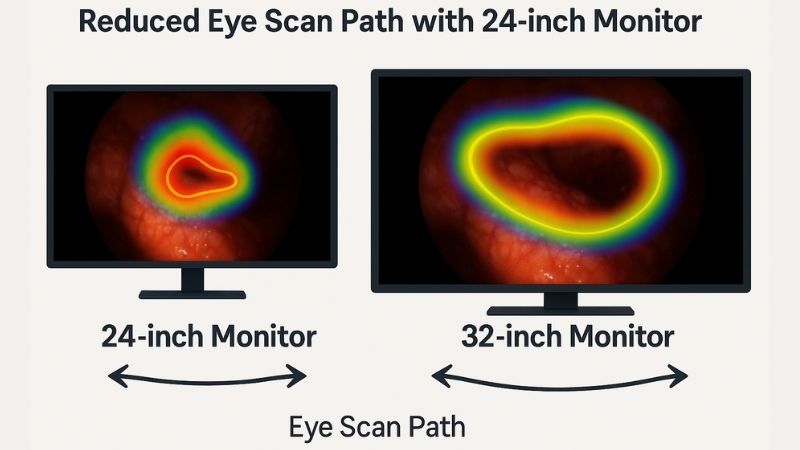
I’ve always believed that "in high-contrast imaging3, a smaller screen reduces eye fatigue4 by narrowing the field of gaze, helping surgeons quickly distinguish structures like vessels, ducts, or lesions." Endoscopic images are inherently contrast-rich, with bright, illuminated areas set against the darkness of unlit lumens. While our Reshin monitors, including the MS247SA, are designed for high contrast ratios to accurately render these scenes, the physical size of the display also plays a role in surgeon comfort. A 24-inch monitor limits the amount of intense light directly entering the surgeon’s field of vision compared to a much larger screen, especially when viewed from the typical distances in an OR. This can lead to reduced glare perception and less pupillary adjustment, contributing to lower eye strain during prolonged procedures. This is a subtle but important ergonomic factor5 that procurement managers like Alex Müller, who consider overall system usability for their OEM clients, would find valuable. The goal is to provide sharp, clear, high-contrast images that are also sustainable to view for the duration of complex endoscopic interventions.
| Feature of 24-inch Monitor | Benefit for High-Contrast Endoscopy | Impact on Surgeon |
|---|---|---|
| Focused Field of Gaze | Easier differentiation of bright/dark areas | Reduced visual search time |
| Controlled Brightness Area | Less overall intense light exposure | Lower eye fatigue |
| Optimal Viewing Distance | Comfortable viewing without excessive head/eye movement | Improved concentration |
| Efficient Information Display | Key details within a manageable visual span | Quicker identification of pathology |
Why is pixel density critical in visualizing fine tissue structures during endoscopy?
Identifying minute polyps, subtle mucosal changes, or the precise origin of a bleed requires exceptionally sharp and detailed imaging. Insufficient pixel density can blur these fine details.
The Full HD resolution on a 24-inch monitor like the Reshin MS247SA provides high pixel density, ensuring fine differences in light, shadow, and texture—essential for identifying polyps or bleeding points—are clearly visible.
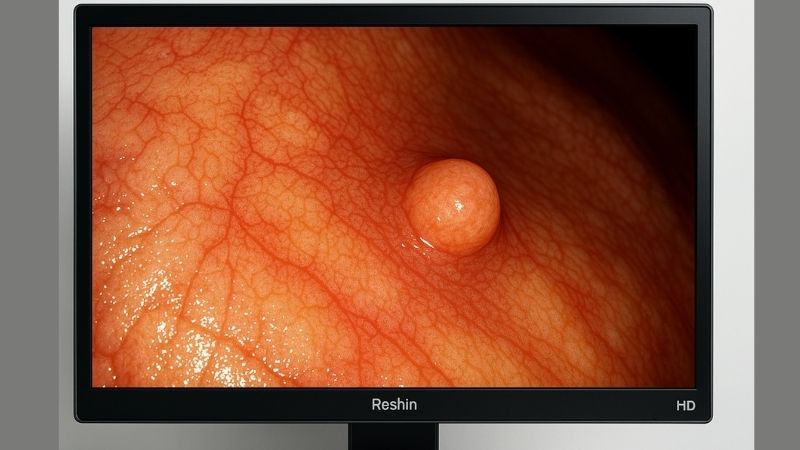
My insight on this point is crucial: "The pixel density6 of a 24-inch Full HD monitor ensures that fine differences in light and shadow—essential in identifying polyps or bleeding points—are clearly visible." The Reshin MS247SA features Full HD (1920×1080 pixels) resolution7. When these pixels are distributed across a 24-inch screen, the resulting pixel density (pixels per inch, or PPI) is high enough to render extremely sharp and detailed images. In endoscopy, this translates to the ability to clearly see the subtle textures of mucosal surfaces, the delicate architecture of villi, or the faint discoloration that might indicate early-stage pathology. The precise demarcation between a small polyp and the surrounding healthy tissue, or the exact point of capillary bleeding, becomes much more discernible. This level of detail is non-negotiable for diagnostic accuracy8 and therapeutic precision. For Dr. Amy Chen, ensuring precise performance of imaging systems is a core responsibility, and the high pixel density of our 24-inch monitors directly supports this mandate.
How does compact size benefit monitor positioning in minimally invasive surgery?
Operating rooms are often crowded with essential equipment, and endoscopic setups can involve multiple arms and devices around the patient. Bulky monitors can further complicate this, hindering ideal placement.
The relatively compact form factor of a 24-inch monitor, such as the MS247SA, allows for more versatile and precise placement on equipment booms or carts without obstructing other critical systems or surgical access.
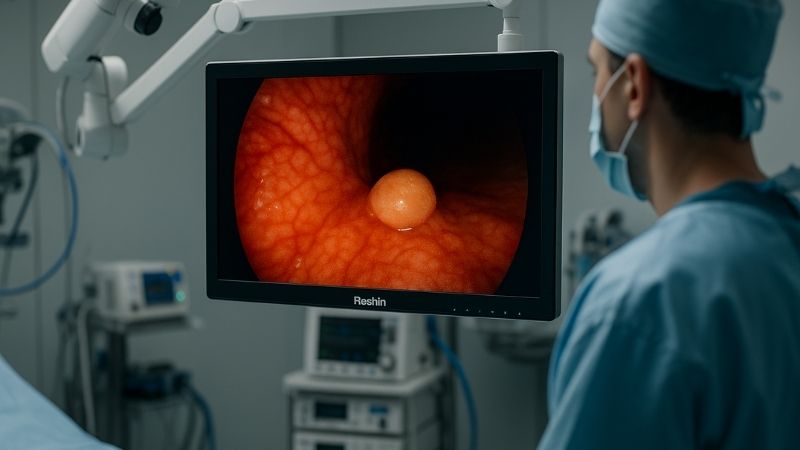
Because endoscopic surgeries9 are often performed in tight ORs with multiple equipment arms, a 24-inch monitor allows precise placement without obstructing other systems." This is a very practical advantage that I’ve observed in numerous surgical settings. The Reshin MS247SA is large enough for excellent visualization yet compact enough not to dominate the space or interfere with the movement of surgical staff or other equipment, like anesthesia machines or instrument tables. Its manageable size and weight make it well-suited for mounting on ceiling-mounted booms or mobile carts, allowing it to be positioned ergonomically for the surgeon—often directly in their line of sight—without creating blind spots or access issues. This flexibility is key in dynamic OR environments where the setup might need slight adjustments depending on the specific endoscopic procedure or patient positioning. For regional distributors like Luis Herrera, whose clients might be equipping diverse hospital settings, the versatility in positioning offered by a 24-inch monitor10 enhances its appeal.
What display technologies enhance contrast and depth perception in 24-inch monitors?
Simply having high contrast isn’t enough; the monitor must intelligently process the image to reveal detail in both bright and dark areas and provide a sense of depth.
Advanced image processing, dynamic contrast enhancement, and anti-reflective coatings on 24-inch monitors like the Reshin MS247SA are optimized to improve detail in shadows and highlights, enhancing depth perception significantly.
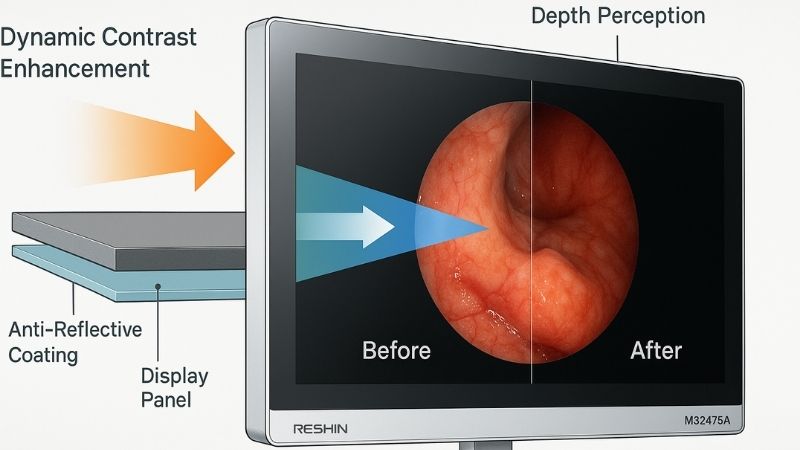
My experience is that "advanced image processing technologies like dynamic contrast enhancement11 and anti-reflective coating are better optimized on 24-inch screens where viewing angles and proximity matter." Reshin monitors, including the MS247SA, incorporate sophisticated image processing algorithms12. These technologies analyze the incoming video signal in real-time to optimize brightness, contrast, and gamma for endoscopic applications. Dynamic contrast enhancement, for instance, can selectively boost contrast in darker areas of the image without washing out the brighter parts, revealing details that might otherwise be lost in shadow. This is critical for depth perception within body cavities. Furthermore, anti-reflective coating13s minimize glare from ambient OR lights, ensuring the high-contrast image produced by the monitor is clearly seen by the surgeon. The 24-inch size allows these technologies to be fine-tuned for typical viewing distances and angles encountered in endoscopy, ensuring the surgeon gets a clear, deep, and artifact-free view. Our R&D team, with over 200 members and 100+ patents, constantly works on refining these technologies to deliver superior medical imaging.
Conclusion
The Reshin MS247SA 24-inch surgical monitor is expertly engineered for high-contrast endoscopic imaging, providing an optimal blend of focused viewing, superior pixel density, flexible positioning, and advanced image enhancement for precise surgical work.
Looking for precision and clarity in compact form? Contact us at martin@reshinmonitors.com to learn how the MS247SA can enhance your endoscopic procedures.
- Explore how a 24-inch monitor can enhance clarity and focus during endoscopic procedures, improving surgical outcomes. ↩
- Learn effective strategies to reduce visual fatigue in surgeons, enhancing their focus and performance during operations. ↩
- Explore how high-contrast imaging enhances surgical precision and reduces eye strain, crucial for long procedures. ↩
- Learn effective strategies to minimize eye fatigue in surgeons, ensuring better focus and performance during operations. ↩
- Discover key ergonomic considerations that improve surgeon comfort and efficiency, vital for optimal surgical outcomes. ↩
- Understanding pixel density is essential for evaluating monitor quality, especially in medical imaging where detail is critical. ↩
- Exploring the advantages of Full HD resolution can help you appreciate its role in delivering sharp images for medical diagnostics. ↩
- Learning about diagnostic accuracy can enhance your understanding of its significance in healthcare and the role of technology in improving it. ↩
- Learn about the benefits of endoscopic surgeries, including reduced recovery times and improved patient outcomes. ↩
- Discover how a 24-inch monitor can optimize visibility and workflow in surgical settings, enhancing overall efficiency. ↩
- Explore this link to understand how dynamic contrast enhancement improves image quality, especially in medical applications, enhancing visibility for surgeons. ↩
- Discover the role of advanced image processing algorithms in enhancing medical imaging, ensuring better outcomes in surgeries. ↩
- Learn about anti-reflective coatings and their importance in reducing glare, which is crucial for clear visibility in surgical environments. ↩


